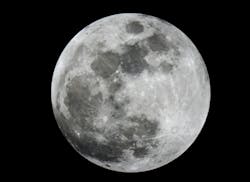Call it Act 2 of Crops in Space. NASA, which has been growing plants under LED lights for years on the International Space Station, is now planning to do the same on the Moon.
The space agency has tapped Boulder, Colo.’s Space Lab technologies to lead the development of an indoor growth chamber — akin to a small vertical farm — that astronauts will use to grow three crops on the moon under LEDs, as part of the Artemis III mission.
Artemis III will mark the first time humans have landed on the moon since 1972. Its date has slipped to what NASA says will be “no earlier than Sept. 2026,” when two of the four onboard astronauts will descend to the lunar surface.
There they will undertake several initiatives, including putting together the horticultural unit, called Lunar Effects on Agricultural Flora, or LEAF.
“Lunar Effects on Agricultural Flora (LEAF) will investigate the lunar surface environment’s effects on space crops,” NASA said. “LEAF will be the first experiment to observe plant photosynthesis, growth, and systemic stress responses in space-radiation and partial gravity. Plant growth and development data, along with environmental parameters measured by LEAF, will help scientists understand the use of plants grown on the Moon for both human nutrition and life support on the Moon and beyond.”
Space Lab further explained in its own press release that the project will investigate the use of crops not only as food, but also for removing CO2, providing oxygen, and helping with water purification in the lunar environment.
The enclosed chamber protects the crops from the Moon’s harsh and unusual surroundings including radiation, extreme temperatures, sunlight, and reduced gravity. The expedition will grow the crops to the seedling stage.
“The experiment includes a plant growth chamber with an isolated atmosphere, housing red and green varieties of Brassica rapa (Wisconsin Fast Plants®), Wolffia (duckweed), and Arabidopsis thaliana,” Space Lab stated. Brassica rapa is a species that includes bok choy, certain cabbages, mizuna, turnips, mizuna greens, and other edible plants. NASA astronauts are familiar with cultivating and eating it on the International Space Station.
Arabidopsis thaliana, commonly known as thale cress, has also been grown on the ISS. Wolffia (duckweed) is an aquatic plant consumed in parts of Asia.
“Astronauts are going to be quite excited about the prospects of eating any plants and fresh food,” Space Lab vice president Christine Escobar told the BBC Radio 4’s Today news program earlier this week. “In general, fresh food is always very welcome for an astronaut crew as a break from the mundane diet of dehydrated prepackaged meals.”
LEAF is one of three sets of scientific equipment that NASA is sending up on Artemis III. The other two will monitor seismic activity and dielectric (transmitting electric forces without conduction) characteristics.
Artemis III will land on the Moon’s south pole. It will be preceded by Artemis II, a crewed lunar fly-by mission that NASA hopes to launch “no earlier than Sept. 2025,” roughly a year before Artemis III.
MARK HALPER is a contributing editor for LEDs Magazine, and an energy, technology, and business journalist ([email protected]).
Follow our LinkedIn page for our latest news updates, contributed articles, and commentary, and our Facebook page for events announcements and more. You can also find us on the X platform.

Mark Halper | Contributing Editor, LEDs Magazine, and Business/Energy/Technology Journalist
Mark Halper is a freelance business, technology, and science journalist who covers everything from media moguls to subatomic particles. Halper has written from locations around the world for TIME Magazine, Fortune, Forbes, the New York Times, the Financial Times, the Guardian, CBS, Wired, and many others. A US citizen living in Britain, he cut his journalism teeth cutting and pasting copy for an English-language daily newspaper in Mexico City. Halper has a BA in history from Cornell University.





